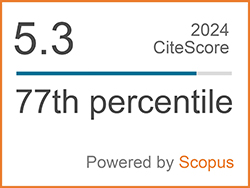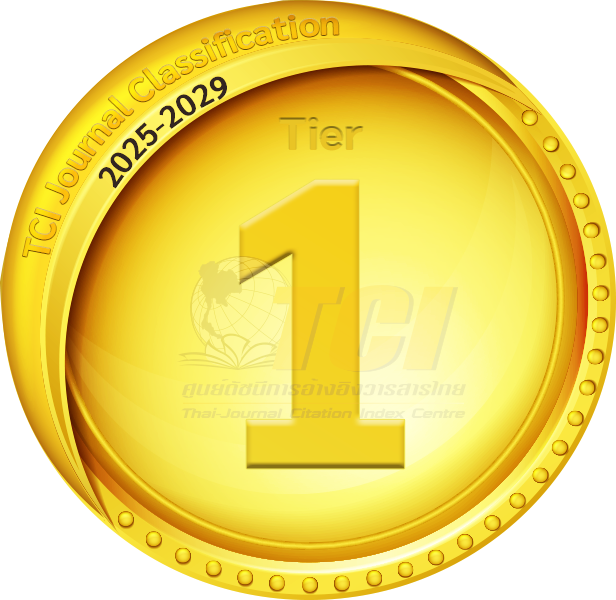Sustainable MWCNT and TiO2 Nanofluids for CO2 Absorption and Their Stability: An Experimental Study
Abstract
Keywords
[1] B. Aghel, S. Janati, F. Alobaid, A. Almoslh, and B. Epple, “Application of nanofluids in CO2 absorption: A review,” Applied Sciences, vol. 12, no. 6, Mar. 2022, doi: 10.3390/app12063200.
[2] W. Lee, R. Xu, S. Kim, J. H. Park, and Y. T. Kang, “Nanofluid and nanoemulsion absorbents for the enhancement of CO2 absorption performance,” Journal of Cleaner Production, vol. 291, Apr. 2021, doi: 10.1016/j.jclepro.2021. 125848.
[3] H. Eshgarf, A. A. Nadooshan, A. Raisi, and M. Afrand, “Experimental examination of the properties of Fe3O4/water nanofluid, and an estimation of a correlation using an artificial neural network,” Journal of Molecular Liquids, vol. 374, p. 121150, 2023, doi: 10.1016/j.molliq. 2022.121150.
[4] Tavakoli, K. Rahimi, F. Saghandali, J. Scott, and E. Lovell, “Nanofluid preparation, stability and performance for CO2 absorption and desorption enhancement: A review,” Journal of Environmental Management, vol. 313, p. 114955, 2022, doi: 10.1016/j.jenvman.2022.114955.
[5] T. Ramprasad and A. K. Suresh, “Absorption of CO2 in nanofluids: Influence of the material density of nanoparticles and a correlating principle,” Industrial & Engineering Chemistry Research, vol. 62, no. 45, pp. 19205–19215, Nov. 2023, doi: 10.1021/acs.iecr.3c00667.
[6] B. Aghel, S. Sahraie, and E. Heidaryan, “Comparison of aqueous and non-aqueous alkanolamines solutions for carbon dioxide desorption in a microreactor,” Energy, vol. 201, p. 117618, Jun. 2020, doi: 10.1016/J.ENERGY. 2020.117618.
[7] B. Devakki and S. Thomas, “Experimental investigation on absorption performance of nanofluids for CO2 capture,” International Journal of Air-Conditioning and Refrigeration, vol. 28, no. 2, Jun. 2020, doi: 10.1142/S2010132 520500170.
[8] Rahmatmand, P. Keshavarz, and S. Ayatollahi, “Study of absorption enhancement of CO2 by SiO2, Al2O3, CNT, and Fe3O4 nanoparticles in water and amine solutions,” Journal of Chemical & Engineering Data, vol. 61, no. 4, pp. 1378–1387, Apr. 2016, doi: 10.1021/acs.jced.5b00442.
[9] B. Aghel, S. Janati, S. Wongwises, and M. S. Shadloo, “Review on CO2 capture by blended amine solutions,” International Journal of Greenhouse Gas Control, vol. 119, p. 103715, Sep. 2022, doi: 10.1016/J.IJGGC.2022.103715.
[10] J. W. Lee and Y. T. Kang, “CO2 absorption enhancement by Al2O3 nanoparticles in NaCl aqueous solution,” Energy, vol. 53, pp. 206–211, May. 2013, doi: 10.1016/J.ENERGY.2013.02.047.
[11] A. Krótki et al., “Experimental results of advanced technological modifications for a CO2 capture process using amine scrubbing,” International Journal of Greenhouse Gas Control, vol. 96, p. 103014, May 2020, doi: 10.1016/J.IJGGC.2020.103014.
[12] B. Aghel, S. Sahraie, E. Heidaryan, and K. Varmira, “Experimental study of carbon dioxide absorption by mixed aqueous solutions of methyl diethanolamine (MDEA) and piperazine (PZ) in a microreactor,” Process Safety and Environmental Protection, vol. 131, pp. 152–159, Nov. 2019, doi: 10.1016/J.PSEP.2019.09.008.
[13] W. Yu, T. Wang, A. H. A. Park, and M. Fang, “Review of liquid nano-absorbents for enhanced CO2 capture,” Nanoscale, vol. 11, no. 37, pp. 17137–17156, Sep. 2019, doi: 10.1039/C9NR05 089B.
[14] M. Darabi, M. Rahimi, and A. Molaei Dehkordi, “Gas absorption enhancement in hollow fiber membrane contactors using nanofluids: Modeling and simulation,” Chemical Engineering and Processing: Process Intensification, vol. 119, pp. 7–15, Sep. 2017, doi: 10.1016/J.CEP.2017. 05.007.
[15] J. Salimi, M. Haghshenasfard, and S. G. Etemad, “CO2 absorption in nanofluids in a randomly packed column equipped with magnetic field,” Heat and Mass Transfer, vol. 51, no. 5, pp. 621–629, May 2015, doi: 10.1007/S00231-014-1439-5.
[16] A. Haghtalab, M. Mohammadi, and Z. Fakhroueian, “Absorption and solubility measurement of CO2 in water-based ZnO and SiO2 nanofluids,” Fluid Phase Equilibia, vol. 392, pp. 33–42, Apr. 2015, doi: 10.1016/ J.FLUID.2015.02.012.
[17] B. Rahmatmand, P. Keshavarz, and S. Ayatollahi, “Study of absorption enhancement of CO2 by SiO2, Al2O3, CNT, and Fe3O4 nanoparticles in water and amine solutions,” Journal of Chemical & Engineering Data, vol. 61, no. 4, pp. 1378–1387, Apr. 2016, doi: 10.1021/ACS.JCED.5B00442.
[18] J. W. Lee, J. Y. Jung, S. G. Lee, and Y. T. Kang, “CO2 bubble absorption enhancement in methanol-based nanofluids,” International Journal of Refrigeration, vol. 34, no. 8, pp. 1727–1733, Dec. 2011, doi: 10.1016/J.IJREFRIG.2011.08.002.
[19] Q. Zhang, Z. Ning, X. Li, X. Ning, F. Wu, and J. Zhou, “Experimental study of CO2 capture by nanoparticle-enhanced 2-amino-2-methyl-1-propanol aqueous solution,” RSC Advances, vol. 13, no. 48, pp. 33644–33653, Nov. 2023, doi: 10.1039/ D3RA06767J.
[20] N. P. Khumalo, O. T. Mahlangu, B. B. Mamba, and M. M. Motsa, “Graphene oxide enhanced monoethanolamine and ethylenediamine nanofluids for efficient carbon dioxide uptake from flue gas,” ACS Omega, vol. 9, no. 24, pp. 25625–25637, Jun. 2024, doi: 10.1021/ ACSOMEGA.3C06425.
[21] A. Lashgarinejad, S. S. Hosseini, V. Irani, M. H. Ghasemi, R. Mohammadpour, and A. Tavasoli, “Enhancement of CO2 absorption and heat transfer properties using amine functionalized magnetic graphene oxide/MDEA nanofluid,” Journal of the Iranian Chemical Society, vol. 20, no. 7, pp. 1629–1642, Jul. 2023, doi: 10.1007/ S13738-023-02783-0.
[22] N. Ghasem, “CFD simulation of CO2 absorption by water-based TiO2 nanoparticles in a high pressure stirred vessel,” Scientific Reports, vol. 11, no. 1, p. 1984, Jan. 2021, doi: 10.1038/ s41598-021-81406-1.
[23] M. Ansaripour, M. Haghshenasfard, and A. Moheb, “Experimental and numerical investigation of CO2 absorption using nanofluids in a hollow-fiber membrane contactor,” Chemical Engineering & Technology, vol. 41, no. 2, pp. 367–378, Feb. 2018, doi: 10.1002/ CEAT.201700182.
[24] S. Krishnamurthy, P. Bhattacharya, P. E. Phelan, and R. S. Prasher, “Enhanced mass transport in nanofluids,” Nano Letters, vol. 6, no. 3, pp. 419–423, Mar. 2006, doi: 10.1021/nl0522532.
[25] J. Kluytmans, B. G. M. van Wachem, B. F. M. Kuster, and J. C. Schouten, “Mass transfer in sparged and stirred reactors: Influence of carbon particles and electrolyte,” Chemical Engineering Science, vol. 58, no. 20, pp. 4719–4728, Oct. 2003, doi: 10.1016/J.CES.2003.05.004.
[26] M. S. Huang, P. Chanapongpisa, P. Yasurin, K. Kitsubthawee, J. Phetsom, and I. Lindayani, “Centella asiatica extract loaded BSA nanoparticles using the organic and conventional C. asiatica to improve bioavailability activity and drug delivery system,” Applied Science and Engineering Progress, vol. 13, no. 1, pp. 11–18, 2020, doi: 10.14416/j.asep.2020.01.001.
[27] V. Talugeri, V. B. Nasi, G. Lalagi, and N. B. Pattana, “Performance evaluation of solar parabolic collector using low volume fractions of multi-walled carbon-nanotube in synthetic engine oil,” Applied Science and Engineering Progress, vol. 17, no. 3, p. 7400, Jul. 2024, doi: 10.14416/j.asep.2024.06.005.
[28] Kim, C. W. Jung, and Y. T. Kang, “Mass transfer enhancement during CO2 absorption process in methanol/Al2O3 nanofluids,” International Journal of Heat and Mass Transfer, vol. 76, pp. 484–491, Sep. 2014, doi: 10.1016/j.ijheatmasstransfer.2014. 04.057.
[29] V. S. J. Craig, “Bubble coalescence and specific-ion effects,” Current Opinion in Colloid & Interface Science, vol. 9, no. 1–2, pp. 178–184, Aug. 2004, doi: 10.1016/j.cocis.2004.06.002.
[30] K. Jayappa, V. Kumar, and G. G. Purushotham, “Effect of reinforcements on mechanical properties of Nickel Alloy hybrid Metal matrix composites processed by Sand Mold technique,” Applied Science and Engineering Progress, vol. 14, no. 1, pp. 44–51, 2021, doi: 10.14416/j.asep. 2020.11.001.
[31] Q. Zhang, C. Cheng, T. Wu, G. Xu, and W. Liu, “The effect of Fe3O4 nanoparticles on the mass transfer of CO2 absorption into aqueous ammonia solutions,” Chemical Engineering and Processing - Process Intensification, vol. 154, p. 108002, Aug. 2020, doi: 10.1016/j.cep.2020. 108002.
[32] J. Saien and H. Bamdadi, “Mass transfer from nanofluid single drops in liquid–liquid extraction process,” Industrial & Engineering Chemistry Research, vol. 51, no. 14, pp. 5157–5166, Apr. 2012, doi: 10.1021/IE300291K.
[33] S. Lu, J. Song, Y. Li, M. Xing, and Q. He, “Improvement of CO2 absorption using Al2O3 nanofluids in a stirred thermostatic reactor,” The Canadian Journal of Chemical Engineering, vol. 93, no. 5, pp. 935–941, May 2015, doi: 10.1002/ cjce.22175.
[34] P. C. M. Kumar, K. Palanisamy, and V. Vijayan, “Stability analysis of heat transfer hybrid/water nanofluids,” in Materials Today: Proceedings. 2020, pp. 708–712, doi: 10.1016/j.matpr.2019. 06.743.
[35] S. Sadeddin, M. Abbasi, and S. Riahi, “Simultaneous improvement of nanofluid stability and CO2 absorption by chitosan-grafted multi-walled carbon nanotubes dispersed in MDEA-based nanofluid,” International Journal of Environmental Science and Technology, pp. 1–14, Jul. 2024, doi: 10.1007/S13762-024-05858-4.
[36] A. Tavakoli, K. Rahimi, F. Saghandali, J. Scott, and E. Lovell, “Nanofluid preparation, stability and performance for CO2 absorption and desorption enhancement: A review,” Journal of Environmental Management, vol. 313, p. 114955, Jul. 2022, doi: 10.1016/j.jenvman.2022. 114955.DOI: 10.14416/j.asep.2025.10.007
Refbacks
- There are currently no refbacks.
 Applied Science and Engineering Progress
Applied Science and Engineering Progress







